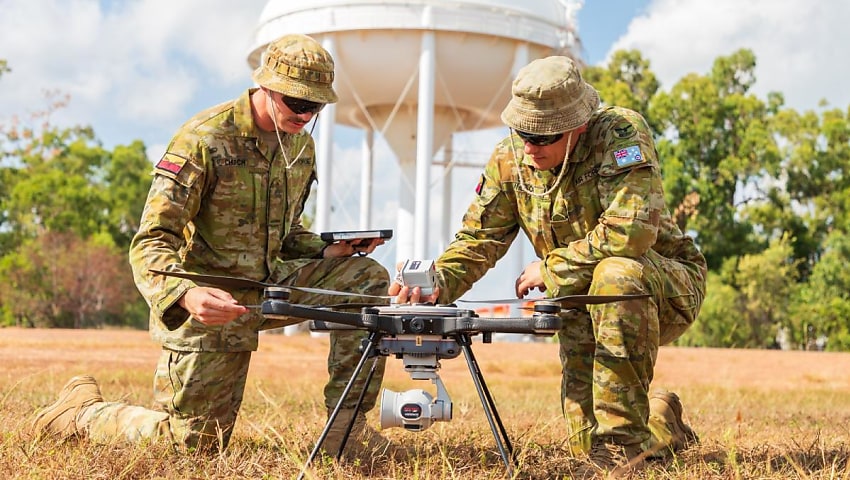Australian diggers could receive their ammunition and rations delivered by air as the Australian Defence Force issues contracts to develop tactical logistics uncrewed aerial systems.
To continue reading the rest of this article, please log in.
Create free account to get unlimited news articles and more!
The contracts, awarded in August, follow a series of successful pitches at the Army Innovation Day and the Australian Army will work with selected companies over the next two years to develop the combat supply drone designs.
Queensland aircraft manufacturer Jabiru Aircraft was selected to develop a four-cylinder petrol engine medium-lift coaxial quadcopter to deliver 50-kilogram loads, while fellow Queenslander Crystalaid Manufacture was selected for heavy lift eight-rotor, turbine-powered UAV to lift more than 800 kilograms.
Jabiru executive director Michael Halloran said the two large coaxial rotor, four small side rotor design will grab a trunk’s handles, carry it up to 150 kilometres, then drop it off. But it could trade payload for range.
“If we want to go further, we can just take less payload and carry more fuel,” Halloran said.
The design is envisaged to be inexpensive enough to be produced en masse and fly itself automatically between waypoints entered by an operator, Halloran said.
Crystalaid director Ross McKinnon said the craft’s redundant systems would mean it could take damage and still fly after losing systems, including rotors.
Some rotors would provide lift while others control direction, meaning the craft remains level when moving, unlike traditional helicopter designs, he said.
“When you’re moving casualties or containers, you don’t want it tilting all the time. Moving in a flat plane helps operationally in some situations,” McKinnon said.
“We want warfighters to be able to call in containers from any mobile device in congested communications environments.
“So we should be able to move more containers for the same number of people.”
Jabiru and Crystalaid will both demonstrate to Defence in late 2024, while ACT manufacturer Geodrones will demonstrate their hybrid-powered coaxial design heavy lift drone carrying up to 1,000 kilograms in early 2025.
Geodrones chief executive officer Glenn Alcock said the design is envisaged to facilitate movement of heavy loads between units or ship to shore.
“That allows us to fly on descent in a silent fashion, turning off the engines and coming in on electrical load,” he said.
Concept design has just been finished and a demonstration with Army is about 18 months away, Alcock said.

 Login
Login








